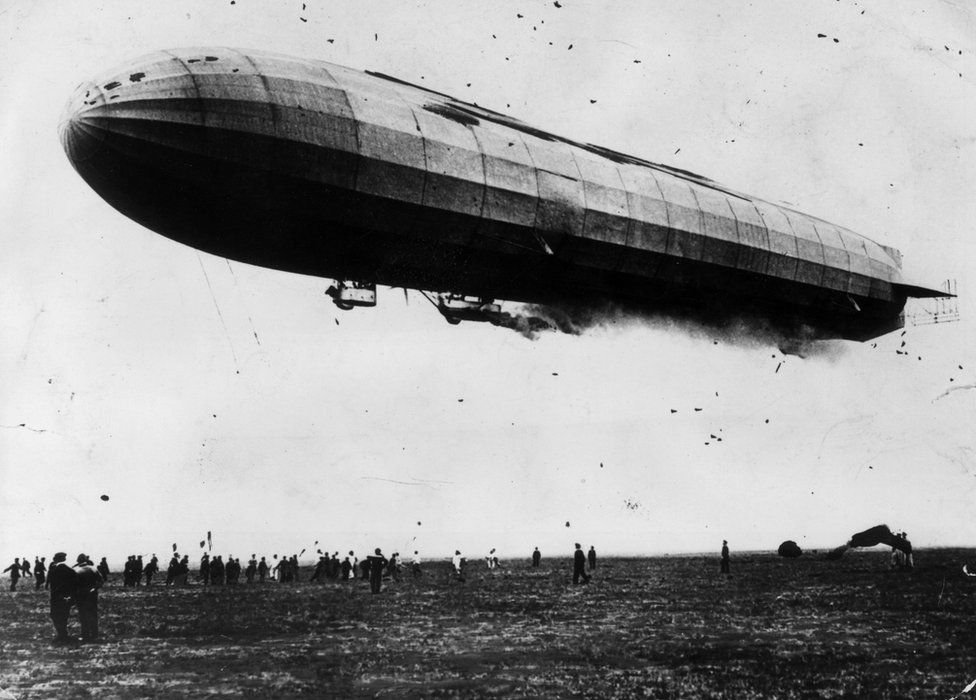Bury St Edmunds Zeppelin terror raids remembered 100 years on
- Published

Civilian deaths inflicted by German airships during World War One have been remembered on the 100th anniversary.
Bombs fell on Bury St Edmunds and Sudbury during an attack by Zeppelin airships on the night of 31 March-1 April 1916.
Twelve people were killed in Suffolk, with further deaths in Essex.
A service of commemoration was held at Bury St Edmunds cemetery at midday. More on this and other stories from Suffolk
Bury St Edmunds, where seven people died, was believed to have been targeted because it was a base for the Suffolk Regiment and home to the Robert Boby engineering plant, which manufactured shells.
Fatalities from an earlier Zeppelin raid on the town, in 1915, were restricted to a dog.
Ron Murrell, of Moyse's Hall Museum in Bury St Edmunds, said: "It would have been terrifying to hear these bombs going off around you - the shock would have been like a spaceship turning up today.
"It would have had an effect on the morale of British soldiers serving on the western front knowing their families back home were at risk, and it would have bolstered morale in Germany."
Five people were killed in Sudbury - four civilians and an off-duty soldier.
Shirley Smith, Sudbury Town Council employee and co-author of No Glorious Dead, said: "It was the first time it brought terror on to the home front and the impact of the war was felt by civilians."
That night, the fleet of airships also dropped bombs on Braintree, Chelmsford and Brentwood in Essex.
A spokesman for Braintree Museum said four people were killed in the town that night, but accurate records for civilian casualties were not kept everywhere.
Ian Hook, curator of the Essex Regiment Museum in Chelmsford, said: "They were such a shock to British civilian life because we regarded ourselves as an impregnable island defended by the world's greatest navy.
"These Zeppelin air raids suddenly changed people's perceptions and they realised we were vulnerable to attack from the air."
- Published6 June 2015
- Published4 August 2014
- Published12 May 2014
- Published20 January 2012
- Published11 August 2001